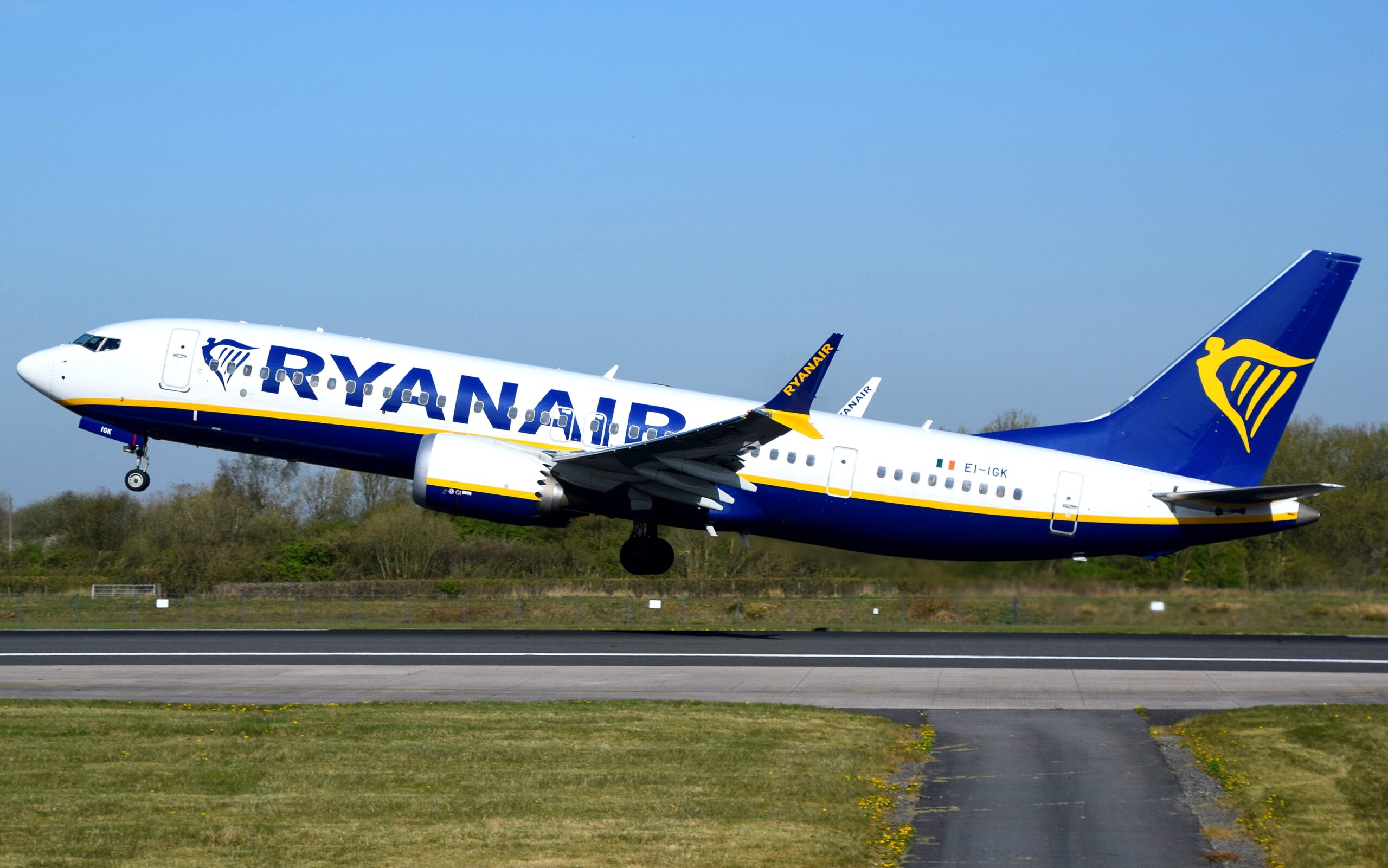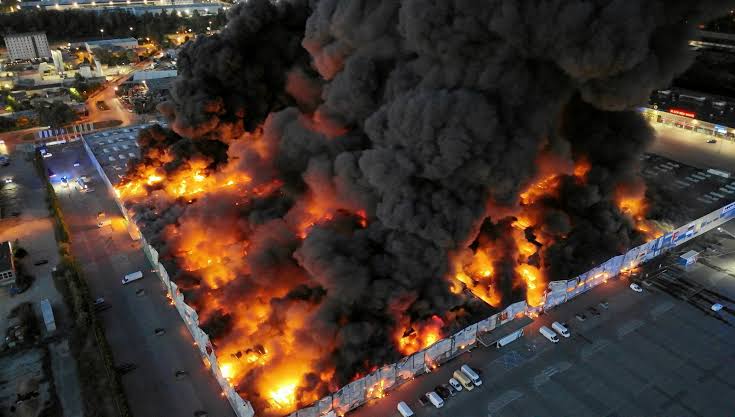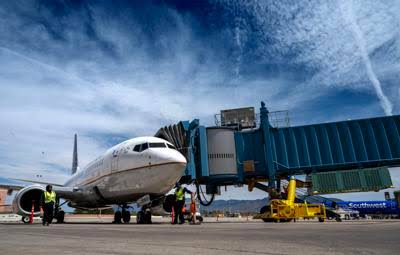Ryanair Flight to United Kingdom Skids Off Runway with 167 Passengers Onboard
Ryanair Flight to United Kingdom Skids Off Runway with 167 Passengers Onboard
| London, UK — A Ryanair flight carrying 167 passengers experienced a frightening incident early Sunday morning after it skidded off the runway during landing at a United Kingdom airport. The aircraft, arriving from Malaga, Spain, veered off the tarmac shortly after touchdown, prompting a rapid emergency response and raising serious questions about airport conditions and airline protocols.
Flight Details and Incident Timeline
The Boeing 737-800 aircraft, operating as Ryanair Flight FR4521, departed from Malaga-Costa del Sol Airport at 4:35 AM local time and was scheduled to land at London Stansted Airport shortly before 7:00 AM BST. Weather conditions at the time of landing were reported to be challenging, with strong crosswinds and heavy rain affecting visibility and braking efficiency.
As the aircraft made its final descent and touched down on runway 04, eyewitnesses and aviation trackers reported that it appeared to be struggling to maintain alignment. Within seconds of touchdown, the aircraft veered off to the right of the runway, ending up in a grassy safety area approximately 200 meters from the main taxiway.
Emergency response teams were immediately deployed. Airport fire crews, paramedics, and security personnel arrived on the scene within minutes. Passengers were evacuated using mobile stairs after it was confirmed that there was no fire or major structural damage to the fuselage.
No Major Injuries Reported, but Passengers Shaken
Miraculously, no fatalities or serious injuries occurred. A few passengers sustained minor bruises and were treated for shock and anxiety-related symptoms. One elderly passenger was taken to a nearby hospital for precautionary observation.
One of the passengers, 29-year-old Maria Thompson, who was returning from a holiday in Spain, described the terrifying moment:
> “It felt like the plane touched down and then just lost control. There was a horrible screeching sound, and we started skidding. Everyone screamed. We thought we were going to crash into something. The crew stayed calm, but people were definitely panicked.”
Another passenger, businessman Craig Watson, said:
“I’ve been flying for years and never experienced anything like this. Thank God no one was seriously hurt. It could’ve been a lot worse.”
Ryanair and Airport Authorities Respond
In a press release issued two hours after the incident, Ryanair confirmed that flight FR4521 “experienced a runway excursion during landing due to adverse weather conditions.” The airline stated that all 167 passengers and 6 crew members were safely evacuated and are being supported by ground staff.
A spokesperson for London Stansted Airport said:
> “We can confirm that an arriving Ryanair flight left the paved runway area during landing early this morning. Our emergency teams responded immediately, and all passengers were safely disembarked. The runway was closed temporarily but has since reopened for limited traffic.”
The airline has launched an internal investigation in coordination with the UK Civil Aviation Authority (CAA) and the Air Accidents Investigation Branch (AAIB). A full inspection of the aircraft will be conducted to determine the extent of the damage and to evaluate potential contributing factors.
Possible Contributing Factors
Aviation experts believe that several factors may have played a role in the incident:
Weather Conditions: Meteorological reports confirm high crosswinds (up to 28 knots) and moderate to heavy rainfall at the time of landing. Wet runways significantly reduce braking effectiveness and increase the risk of hydroplaning.
Runway Surface: Although Stansted’s runways are well-maintained, a full check is underway to assess whether surface conditions or drainage issues contributed to the aircraft’s inability to stop safely.
Pilot Response: Investigators will likely examine cockpit voice recordings and flight data to assess the crew’s actions during the final approach and landing. Factors such as landing speed, alignment, and reverse thrust timing will be crucial.
Aircraft Condition: Preliminary reports suggest the aircraft was well within its maintenance schedule, but its tires, braking system, and thrust reversers will undergo thorough checks.
Broader Implications and Passenger Rights
The incident has raised concerns about flight safety in poor weather and the adequacy of emergency preparedness. Ryanair is known for its aggressive schedule and tight turnaround times, but the airline insists that safety is never compromised.
Under UK and EU aviation law, passengers involved in runway excursions or emergency landings may be entitled to compensation, particularly if the airline is found liable. However, weather-related incidents often fall under the “extraordinary circumstances” clause, which may exempt the carrier from certain responsibilities unless negligence is proven.
Aviation attorney James Beeching commented:
> “In cases like this, it’s too early to say whether passengers will receive compensation. The focus right now will be on the investigation, but legal proceedings could follow depending on the findings.”
Airline’s Safety Record and Industry Reaction
Ryanair, Europe’s largest low-cost airline, carries over 150 million passengers annually. While the airline has a strong safety record and no history of fatal crashes, it has experienced occasional incidents involving hard landings, bird strikes, and emergency diversions.
The European Aviation Safety Agency (EASA) has acknowledged the event and confirmed that they are monitoring the investigation closely. Pilots’ unions have called for a review of operational pressures during poor weather, especially at busy airports.
Captain Leonard Hughes, a retired commercial pilot, said:
> “Landing in bad weather is always a challenge, even for experienced crews. Low-cost carriers often operate tight schedules, and while that doesn’t mean they cut corners, it does increase workload and pressure.”
Passengers Await Further Updates
Most of the passengers were rebooked on alternate flights later in the day. Ryanair has offered hotel accommodations and meal vouchers to those affected. Some passengers opted to return home or continue their journey by rail.
Ryanair’s customer service hotline has been flooded with calls, and the airline’s social media channels have posted regular updates. Still, some customers have expressed frustration with delayed communication and lack of clarity.
The airline has pledged to keep passengers informed as the investigation progresses and to cooperate fully with aviation authorities.
Conclusion
The near-disaster at Stansted serves as a stark reminder of the unpredictable nature of air travel, particularly during severe weather. While the aviation industry has made significant advancements in safety, incidents like this underscore the importance of vigilance, preparedness, and transparency.
With all passengers safe and a formal inquiry underway, the priority now is to understand exactly what went wrong—and how such occurrences can be prevented in the future.






